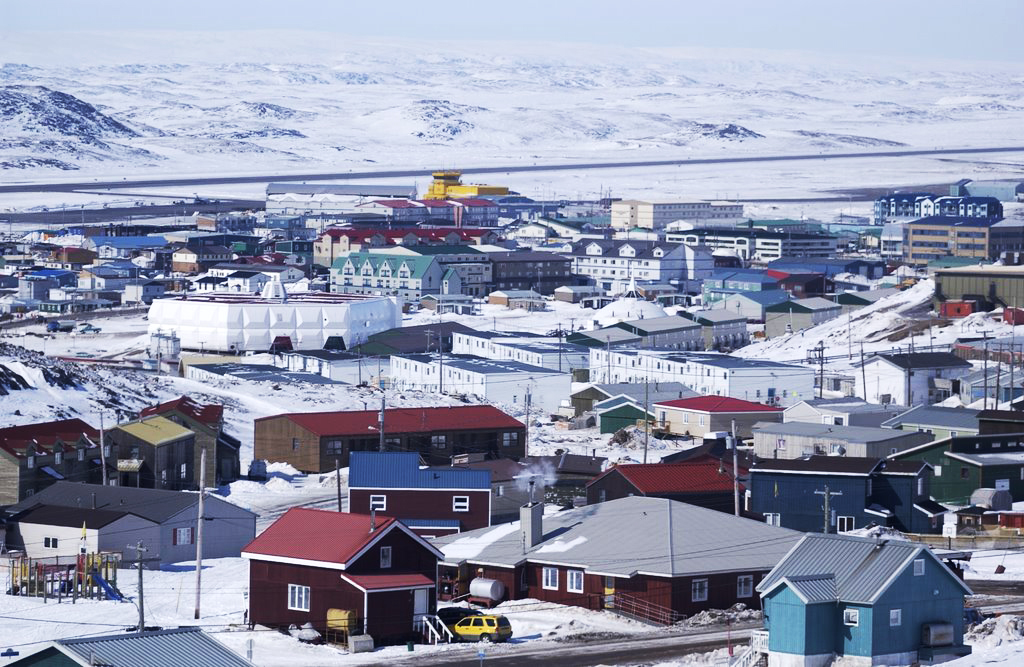
Annual rates of gastrointestinal illness in Canada’s North are among the highest reported in the world — three to six times higher than regions to the south — but there is currently little or no information about why it’s so prevalent in the Arctic.
University of Guelph researchers, along with representatives from the Nunavut Research Institute, Memorial University and the Public Health Agency of Canada, are searching for clues. Using a “one health” approach — considering how people, animals and environment intersect — they are looking at possible links between clams, dogs, surface water and zoonotic pathogens Giardia and Cryptosporidium, which can cause gastrointestinal illness.
“Instead of just focusing on dogs or focusing on food — a typical approach to answering these types of questions — we’re trying to look at it from an entire systems perspective,” says Prof. Sherilee Harper, an epidemiologist in the Ontario Veterinary College’s Department of Population Medicine and researcher for the PAWS project (people, animals, water and sustenance).
A renewed focus on improving life in Canada’s North, including a commitment from Prime Minister Justin Trudeau during the last federal election campaign, is shining the light on issues affecting residents in the North, including food safety, water and climate change.
Every aspect of the PAWS project was developed after intensive consultation with the residents in and around Iqaluit, Nunavut. “They identified brook water, which people often drink untreated in the community, dogs — pet dogs, yard dogs and working dogs or sled dogs — and clams as a source of food, which was suspected as sources of outbreaks in the past,” says Harper. In the North, harvesting clams is a traditional activity for both sustenance and cultural relevance.
They also narrowed the focus to Giardia and Cryptosporidium as the pathogens of most interest. Both are complex organisms with different strains. In some cases the pathogens can be transferred species to species and in other instances they are host-specific.
“For example, some dogs may have Giardia but be of no risk to humans because it is the wrong strain, while other dogs may have the strain of Giardia that can be spread to humans,” explains Prof. Jan Sargeant, director of U of G’s Centre for Public Health and Zoonoses. “Just because we find Giardia doesn’t mean it is shared between these different species or different sources. We have to look at the actual strains using molecular techniques to figure out what’s going on in particular cases.”
A crucial part of the study involves understanding the Inuit relationship to each of the study’s components. This not only informs the research but also sets the stage to act in a culturally appropriate way. Understanding nuances is also important in determining how people might be getting sick.
“Which dogs might have access to the surface water? The sled dogs may if they are out working on the land, but do the house dogs? The qualitative research really helps us to understand what species interact with each other and with humans,” says Sargeant.
Over the summer, students gathered data, tested surface water, and collected samples of clams and dogs’ feces. Next steps will focus on finishing the lab work and bringing preliminary findings back to the community for discussion and interpretation. Developing capacity is also an important part of the project, so the local community has the capability to do further testing and surveillance if they choose.
Researchers hope to build capacity in communities to monitor and respond to outbreaks, and to ultimately reduce the high rates of gastrointestinal illness.
The relationship with the community, part of the one health approach, is critical. “How we use the results depends on discussions with the community,” says Sargeant. “If there is any need for public health messaging, they will develop it so it is culturally appropriate.”
The future of Canada’s northern regions will be the focus of a panel discussion at the Guelph Civic Museum Nov. 29. All Eyes North will look at University of Guelph research on improving life in the North. Doors will open at the museum, located at 52 Norfolk St., at 6:30 p.m., with the discussion starting at 7 p.m.